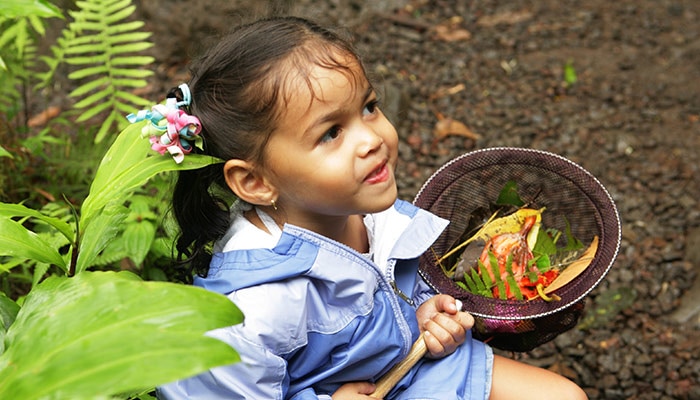While we believe that the books and resources recommended may be of value to you, keep in mind that these are suggestions only and you must do your own due diligence to determine whether the materials are appropriate and suitable for your use. PNC has no sponsorship or endorsement agreement with the authors or publishers of the materials listed.
HABITATS

Rainforest Rain Sticks
Children will learn about the rainforest and make rain sticks.

Lesson Objective
Children will learn about the rainforest, a unique habitat with extreme amounts of rain, and will create rain sticks.
ScienceArt
What You'll Need
- Styrofoam packing peanuts – 1-1/2 cups for each child
- Aquarium gravel – 2 Tablespoons per child
- Paper towel rolls – one for each child
- Rubber bands – two for each child
- Measuring spoon – 1 Tablespoon
- Brown construction paper
- Glue
- Markers or crayons
What To Do
- Cut the brown paper into circles twice as wide as the opening of the paper towel rolls. Make two circles for each child.
- Give each child a paper towel roll and the markers or crayons.
- Have the children decorate the paper towel roll using the markers or crayons.
- Give each child one circle, one rubber band, and some glue.
- Have them spread glue around the edge of the brown circle and then cap one end of the paper towel roll.
- Use the rubber band to keep the circle on the bottom until it dries.
- Help the children fill their tubes with the styrofoam packing peanuts. Fill the tube, but do not pack the “peanuts” tightly.
- Have each child measure out 1 or 2 tablespoons of aquarium gravel and pour it into the tube.
- Show them how to carefully set the tube, cap side down, on the table while they cap the other end of the paper towel with the second circle. Once again, they should secure the circle with a rubber band.
- Let the glue dry. Remove the rubber bands.
- The rain stick works by holding it straight up and down and then slowly flipping it over so that the aquarium gravel flows from the top to the bottom of the paper towel roll. As the aquarium gravel flows through the tube, it sounds like rainfall.
Resources
Home School Resources
Home educators: use these printable lesson PDFs to teach this lesson to your home schoolers. They're available in English and Spanish.
Content Provided By
Common Core State Standards Initiative – These lessons are aligned with the Common Core State Standards ("CCSS"). The CCSS provide a consistent, clear understanding of the concepts and skills children are expected to learn and guide teachers to provide their students with opportunities to gain these important skills and foundational knowledge [1]. Visit the CCSS


